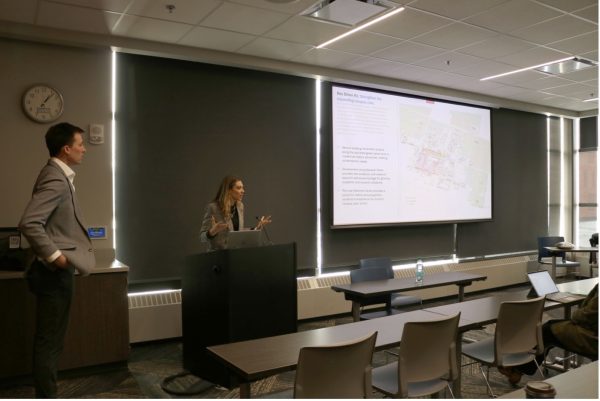Textbook prices and information go public
September 14, 2010
Emma DejongManaging Editor
Buying textbooks is never easy on students’ wallets, but Congress is working to make the cost more bearable.
In July 2010 a Federal law was put in place that requires textbook publishers to have a variety of information available so faculty members can make the best decisions when selecting course materials.
The summary of the Higher Education Opportunity Act by Vincent Sampson said, “The HEOA supports academic freedom of faculty to select high-quality course materials for their students while imposing several new provisions to ensure that students have timely access to affordable course materials at postsecondary institutions receiving Federal financial assistance.”
Sampson is the deputy assistant secretary for policy, planning and innovation in the Office of Postsecondary Education.
Frank LaMonte, executive director of the Student Press Law Center, said high textbook prices for college students have been a growing concern.
“The whole thrust of the law is to put more information of the pricing of textbooks into the hands of consumers, which Congress is hoping will result in holding down prices,” LaMonte said.
The HEOA mandates that companies must disclose the information listed to the right/left.
One of these requirements is the price of course materials as separate units, not as a bundled package made up of various components.
“Professors are entitled to know if the materials are available in an unbundled way, and if so, at what cost,” LaMonte said. “Congress was concerned that publishers were making extra profits by putting a DVD in every textbook.”
Unneeded bundled materials results in students getting less for their money.
“Some bundled products may not be used by the faculty and therefore add cost without enhancing the learning experience,” said Sue Blodgett, plant science department head.
Another aspect that has the potential to better inform faculty members is the disclosure of “a description of substantial content revisions” made to newer textbook editions. This will help buyers to decide if a new edition is worth the cost.
“I think what we will see is that any publisher that was just slapping the words “new edition’ on the book will be exposed,” LaMonte said.
In the law’s summary Sampson also said publishers must include “whether the textbook is available in other formats, and if so, the price to the institution and to the general public.” This would include options such as selling only individual chapters, as well as completely online versions.
“The institution itself is supposed to be making more information available online for consumers so that students can be made aware of alternatives for buying new books,” LaMonte said.
While not all publishing companies were guilty of treating consumers unfairly, the HEOA provides a stricter regulation where this may be the case.
“(Before the law) it was a much more regulated marketplace where the publishers could just about name their price,” LaMonte said.
For multiple SDSU faculty members, finding the necessary information from textbook companies has not always provided any trouble.
“It’s never been a problem for me to source information,” said Volker Brozel, acting head for the biology and microbiology department. “I’ve never had a problem where they’ve been secretive. It’s not in [the companies’] interest.”
Kurt Cogswell, mathematics and statistics department head, said the policies of this law have already started to be followed.
“As a result of pressure from faculty, students and others, the overall textbook market price model was already changing prior to the passage of this law,” Cogswell said. “It will likely be hard to say how much the passage of this law accelerates or otherwise modifies that ongoing process.”
If faculty members or students do have problems receiving necessary information, they must know their rights that the HEOA provides and act on them.
LaMonte said, “The law is only as good as the diligence of the professors and the students.” If faculty members or students have questions about materials they are using and purchasing, the law guarantees them answers if they are proactive and ask.
“It’s going to take a year or two for the awareness that this information is available,” LaMonte said. “In order for professors to hold the textbook publishers accountable, they have to know their rights and take that affirmative step.
#1.1599534:3316403687.jpg:Textbooks:Textbooks:




















